We have long had something of a soft spot for Bulevardul Magheru - possibly Bucharest's busiest street - even in its current, often chaotic, down-at-heel and haphazard state.
Considered by too many locals and visitors alike to be a poor-man’s Calea Victoriei, it might not have the glamour of its more famous (and parallel) neighbour, and at street level at least it is a fair bit sleazier (more sex shops than Gucci shops) but it certainly has more bustle, as well as packing something of a genuine architectural punch: almost every building along its length has some kind of story to tell, and if it’s art deco you are after, then this is the place to come.
Indeed, the street itself has an eventful, even bloody history. The nastier parts of the Romanian revolution of 1989 were played out along its length (the revolution’s first victim in Bucharest fell here), while the Mineriada of 1990 - in which miners from the Jiu Valley rampaged through the streets of the capital, beating anyone they didn’t like the look of - similarly took place here. Most recently, in January of 2012, the area in front of the National Theatre was the again the scene of rioting, as protests against the then government turned violent, protestors fighting over three nights with police and jendarmes.
First off, a quick note about what is, and is not, actually considered to be Bulevardul Magheru. For most people in Bucharest, Magheru in the vernacular refers to the entire stretch of road from Piata Universitate to Piata Romana. For the post office, Magheru in fact begins only after the intersection with Strada C.A. Rosetti. Up to that point, Magheru is officially Bulevardul Nicolae Balcescu. We have never liked the Romanian post office so for us - as for most locals - when we speak of Magheru we are talking about the full length of the street.
Magheru is named after General Gheorghe Magheru, a colourful military leader who fought in the Russo-Turkish wars of 1828-9, but is probably best known as one of the instigators of the Romanian Revolution of 1848. He was part of the short-lived provisional government that briefly led Romania in the summer of 1848, before the revolution was put down by Turkish forces. Magheru went into exile, in Trieste and Vienna, before returning to Romania is 1857 to become a deputy in the country’s nascent national assembly.
From the newly renovated National Theatre and modernist Inter Continental hotel at one end to the huge Coca-Cola bottle that pours itself all over a building at the other, there is a lot more to Magheru that we often realise at street level. The vast majority of the boulevard’s apartment and office blocks were built in the 1920s and 1930s, when a strict urban development policy required all buildings higher than eight storeys to have their upper levels slightly withdrawn from the street, invisible to passers by. Sometimes the law was not entirely respected but in most all cases, if you look closely enough (you might have to cross the road to do so) you will see that there are hidden levels set back from the street: Magheru’s blocks are almost therefore all far higher than they first look.
But we are getting ahead of ourselves. Any architectural tour along Magheru should begin with the theatre, first built between 1967 and 1970, to the design of three Romanian architects, Horia Maicu, Romeo Belea and Nicolae Cucu. Originally styled to honour the architecture of Moldova’s famous monasteries, it was ruined in 1984-5 when a concrete casing was placed over the earlier structure. However, rebuilding work completed in 2015 returned the theatre to a design not all that different to the original. The odd statue in front of the theatre is called the Caruta cu paiate, a tribute to Romania’s best loved playwright, Ion Luca Caragiale. It features characters from Caragiale’s plays, and was unveiled in December 2010.
Opposite, the InterContinental hotel was built contemporaneously with the theatre (it was part of the same project) although designed by different architects: Dinu Hariton, Gheorghe Nadrag and Ion Moscu. Opened in 1971 it was for more than 30 years the tallest building in the city. It is best known for its unique swimming pool (located on the 21st floor it is the highest in Bucharest) and its legendary lobby bar. Bucharest’s best casino operates in the basement. Although the hotel does not advertise the fact, we have never known anyone be refused when politely asking to go up to the top floor to take some photos: the views of the city are fabulous on a sunny day.
On the other side of the road from the hotel is the Dunarea block of apartments, built after the 1977 earthquake destroyed the original, and which for years had one of the best terraces in the city until it was covered up with the horrendous construction we alas see today. Before the earthquake there was a church here too, the Biserica Enei. Emerging relatively unscathed from the quake, an urban myth suggests it was demolished not because it had become unsafe (the official story) but simply because the communists thought it an eyesore. On the site of the church there is now a fountain, which the council had this year wanted to remove and replace. After fierce NGO opposition however, the fountain looks set to stay.
One Magheru church which has survived (probably because it remains the property of the Italian government) is the Italian Church, a red brick gem passed by thousands of people a day without much thought. Rather hemmed in you actually get a better view of it from the other side of the road. A genuine classic of the genre, the church was built in 1930. There are services every Sunday in a variety of languages.
On the corner of Magheru and Strada Dobrescu is the so-called Wilson Block, built in the 1930s for the Creditul Rural mutual society. The block took its name from Strada Wilson, as Strada Dobrescu was known in those days: the Wilson in question being Woodrow Wilson, champion of self-determination and of Transylvania’s unification with the rest of Romania. (After World War II the street took the name - for a while - of Sergei Kirov, before becoming Strada Onesti. After the 1989 revolution the street was named after Demetru Dobrescu, mayor of Bucharest from 1929-1934). The Wilson building itself originally boasted one of the finest art deco facades in the city, but was severely damaged in the 1977 earthquake: it was rebuilt in a less impressive, far more utilitarian manner. The building next door, out of interest, once hosted Romania’s first self-service supermarket, Unic, opened in the 1960s. The next corner is home to One Magheru, an office building recently reopened having been totally rebuilt to the exact specifications (the exterior at least) of the 1920s original.
One of the most amazing buildings on Magheru is on the other side of the road: the Ciclop multi-storey car park, built in the early 1920s and one of the first car parks of its kind anywhere in Europe. While the facade remains in fair if not perfect shape, the interior has fared less well, with many of the steep ramps that allowed cars to access the upper levels missing. No longer used for its original purpose, Ciclop occassionaly hosts for pop-up art events: there are a couple of huge murals inside well worth going to take a look at.
A number of Magheru's buildings - like many in the centre of Bucharest - have become victims of disputed ownership. Nationalised by Romania’s communist authorities in the late 1940s (usually without compensation being paid to the rightful owners), they were sold to well-connected third parties for knock-down prices in the chaotic period after the 1989 revolution: these chancers then refused to hand them back to the original owners. Incredibly, when the highest courts in the land (or in some cases the European Court of Human Rights) eventually ruled in favour of the original owners, those who had illegally bought the properties expected to be compensated by the government. Two potentially fine hotels: the the art deco Ambasador, opened in 1937, and the similarly art deco Lido which stands almost directly opposite both cry out for a five-star makeover but are stuck in limbo due to ownership disputes. The Ambasador at least remains open: the Lido – whose outdoor swimming pool was one of the first in Europe to boast a wave machine and which was the setting for many a grand soiree in the 1930s – was opened in 1930 but has stood empty for almost five years. Its wonderful facade is, alas, currently covered almost entirely by a horrible advertising hoarding: shame on the people responsible.
On the far side of the Ambasador is the starkly modernist, linear Patria/Aro building, built between 1929 and 1931. Designed by Horia Creanga (best known for the Aro Palace hotel in Brasov) it is considered by many to be the finest building on Magheru, not least for its covered passageway at street level, and the cinema that is incorporated into the far end. Its sleek tower (too often masked by horrible adverts these days) is a minor-masterpiece, and for years had Cinema Patria written in classic art deco lettering at the top: these have alas long gone. The cinema remains open, showing current-run films at prices slightly cheaper than the multiplexes in the shopping malls. The Melody Bar, one of very few nightclubs in communist-era Bucharest, was housed in the basement.
Offering a break from the elegant blocks is the large detached house opposite the Patria, home today of the Carturesti book shop and Verona Cafe and Garden. The house (officially an historic monument) was built in 1883 for liberal politician Dimitrie Sturdza, who served as Romania’s prime minister on four separate occasions between 1895 and 1909. It was returned to the Sturdza family in 1996, becoming a bookshop in 2000. Carturesti remains one of Bucharest’s best attempts at a bookshop, and the cafe and (when the weather is good) garden are amongst the most popular meeting spots in the city.
The twin buildings on the other side of the street are both 1960s constructions. The one of the left was known as the ONT building, so-called because the state tourist agency (ONT) operated on the ground floor, while the building on the right was (and still is) known as Eva, named for the women’s department store it housed until a decade or so ago on the ground and first floors.
The so-called Casa Magistratilor (House of the Magistrates) at Magheru 14 bears the unmistakable linearity that was the hallmark of Duiliu Marcu, one of the most gifted and prolific Romanian architects of the 1920s and 1930s, best known for the Palatul Victoriei in Piata Victoriei, today the seat of the Romanian government. Originally incorporating a hotel, the building is today mainly offices and apartments, with shops on the ground floor. From the other side of the road you should note the contrast between the horizontal lines of the main facade and the verticality of the part which faces Strada Jules Michelet.
The Nottara Theatre at Magheru 20 (you will not be able to miss its awnings) was until recently one of the most important theatres in Bucharest. Opened in 1947 as the Teatrul Armatei (Army Theatre) it took the name Nottara in the 1960s: Constantin Nottara (1859-1935) is widely considered to have been one of Romania’s finest ever actors. Alas the theatre is housed in a building considered to be at high risk of collapsing in case of an earthquake, and is currently closed.
Piata Romana
Piata Romana, at the end of Magheru, has little to recommend it. The main building of interest is the neoclassical ASE (Academy of Economic Studies), the facade of which was recently renovated, although the refit has been rendered pointless by the questionable decision to place a horrific, red sign advertising the academy's website on the roof. The building was originally constructed in 1913, and the academy is one of the the largest economics universities in Europe. Next to ASE is a Diverta bookshop, housed in a gorgeous fin-de-siecle villa, once the home of Gheorghe Patrascu, an early 20th century painter regarded as one of Romania’s finest impressionists.


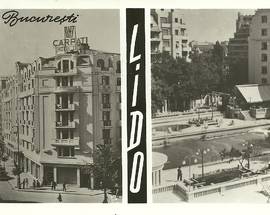
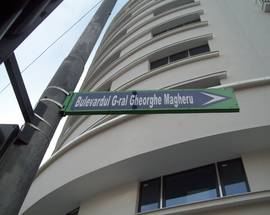
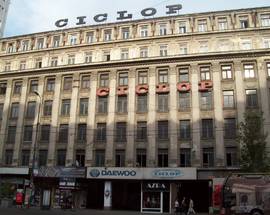
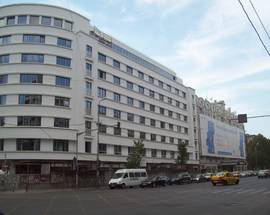
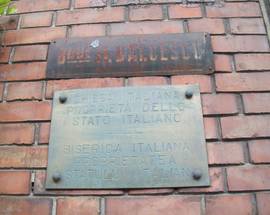
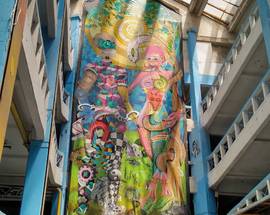


Comments